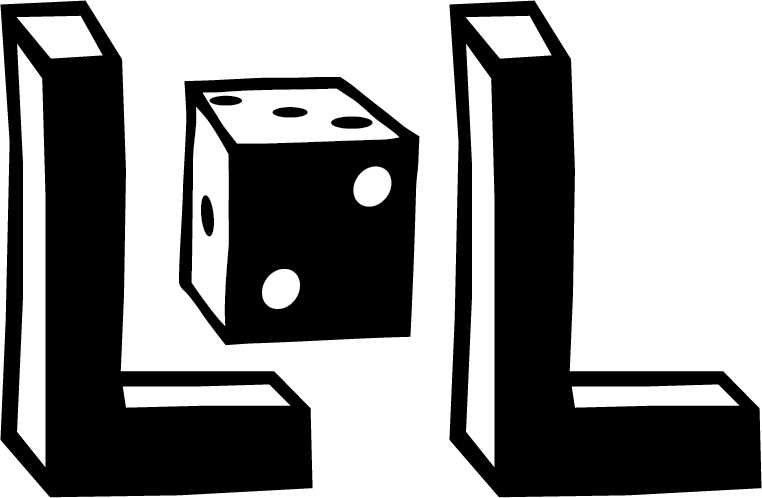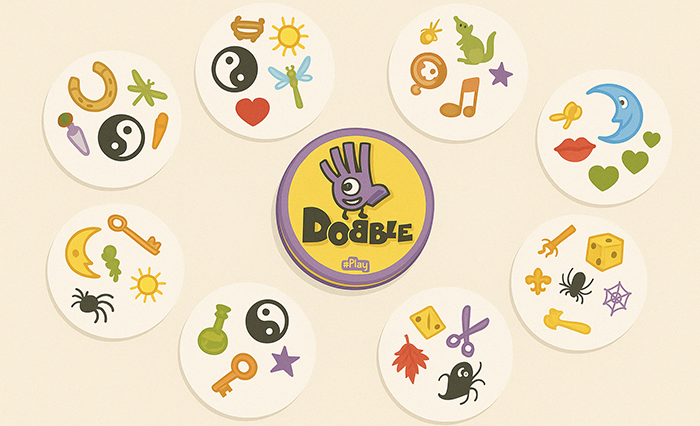Dobble is a popular observation and speed game consisting of round cards featuring various symbols. The unique characteristic of this game is that between any pair of cards, there is always one and only one symbol in common. Players must be the first to identify this common symbol to win the cards. The game stimulates observation skills, reflexes, and rapid recognition abilities, making it an excellent game for both entertainment and learning.
Several versions of the game exist: from classic Dobble with various symbols, to Dobble 1 2 3 with shapes and numbers (perfect for learning numbers and colours), to Dobble Access + and Dobble Giant, which adds a movement component to lessons and is particularly suitable for physically engaging students.
In an educational context, Dobble can be used to reinforce vocabulary, improve pronunciation, and develop quick response abilities in a foreign language.
Adaptation to the educational context:
The game is useful for foreign language teaching because of:
Immediate lexical acquisition – Students must quickly identify and pronounce words in the target language. This need for immediate response reinforces memorization and develops linguistic automatism, essential for fluency.
Natural and motivating repetition – The game mechanics create spontaneous vocabulary repetition without students perceiving the exercise as boring or repetitive. The playful element maintains high motivation.
Effective visual association – The direct connection between image and word facilitates memorisation and lexical recall, creating lasting mental connections.
Language anxiety reduction – The playful aspect and concentration required by the game reduce the anxiety that often accompanies foreign language use.
Language practice:
Vocabulary: Any semantic field, from the alphabet to specialized vocabulary
Grammar: Sentence formation, article usage
Storytelling: Narrative creation using identified elements
Tips for adapting the game to the class level and lesson needs:
– Suitable for all language levels: can be used from the first lesson, with the alphabet for absolute beginners, up to specialized vocabulary for advanced levels.
– Create personalized cards with both images and words in the target language, allowing different difficulty levels within the same class.
– Modify basic rules by requiring not only naming the found word, but creating a complete sentence with that word to earn the card or an extra point.
– For concrete objects, invite students to describe the identified object and explain what we use it for, thus developing descriptive and functional skills.
– During the game, ask students to write down all the words they name. During a follow-up activity, students must create a coherent text using these words. For each game word actually used in the text, add a point to the final score.
– For advanced levels, require the addition of antonyms, synonyms, or detailed descriptions of events or concepts for certain terms, thus expanding lexical and semantic work.
– Use larger game versions (Dobble Giant) for movement activities in class, combining language learning with physical engagement.
– In class, cards can also be presented on an interactive whiteboard. Students divided into small groups must find similar objects and/or words. In this case, it’s useful to give each group a bell they must ring when they find the answer.
Examples of use in CLIL and other subjects:
The added value of using Dobble is that students:
1. Acquire subject-specific vocabulary naturally and enjoyably
2. Develop automatisms in recognizing and using specific terms
3. Use the foreign language in an authentic and motivating context
4. Simultaneously strengthen disciplinary knowledge and language skills
The game mechanics could be used in various subjects to increase specific vocabulary and where it’s important to develop speed in recognizing this vocabulary.
It’s recommended to invite students not only to name objects, but to add some description useful for learning.
For example, in a geography lesson, cards can be created with countries, capitals, and flags. Students could add characteristics like climate, language, resources, etc.
In biology lessons, cards are created with parts of the human body and organs. For the heart, students could give a characteristic like “The heart pumps blood throughout the body.”
Online resources
On the dobblegame.com website you can discover more about this game.
On the Asmodee website you’ll find the game rules.
If you want to download a demo kit and activities based on the game, you can do so in Asmodee’s “Print and play” section.
To try the game online, use the Board Game Arena website.
On the Genially website there’s a ready template for creating a quick online game.
There are also various “Dobble-like generators.” They’re not official, but they use the original game’s algorithms (it’s not so simple to create cards where, given any pair, there’s only one common element!) to create cards. I like this website, where you just need to upload images of the words you need and the site creates the cards, automatically calculating the number of images on each card and the possible number of cards. You can then download the result in PDF format.

